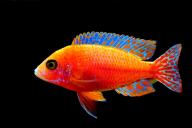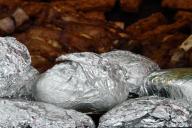If you have tall trees in your garden, then there's always a chance that it can get struck with lightning.
Sometimes it can be quite dangerous, because it can turn into a big fire, and even after the tree might be unsafe.
Here are a few tips on what you should do in that situation.

Safety First
Stay away from the tree and the surrounding area immediately after the lightning strike. Safety is the top priority.
Assess the Damage
Check the tree for visible damage. Look for any splitting of the bark, branches, or a burned appearance.
Remove Hanging Branches
If there are hanging or broken branches, carefully remove them using pruning shears. Make clean cuts to promote healing.
Inspect for Stability
Examine the tree's stability. If it seems unstable or leaning, it may need to be removed to prevent safety hazards.
Watering
Give the tree a good watering to help it recover. Lightning can dry out the soil, and water will be beneficial for the tree's health.
Mulching
Apply a layer of mulch around the base of the tree. Mulch helps retain moisture and provides insulation to the roots.
Watch for Signs of Stress
Keep an eye on the tree for signs of stress, such as wilting leaves or discoloration. These could indicate ongoing damage.
Consult an Arborist
If you're unsure about the tree's health or if it shows signs of severe damage, consider consulting with a professional arborist for advice.
Fertilize Gently
If the tree seems to be recovering, you can apply a balanced, slow-release fertilizer to support its growth. Follow recommended guidelines for application.
Be Patient
Trees take time to recover. Be patient and monitor the tree's progress over the following weeks and months.
Previously, we talked about growing pilea.













